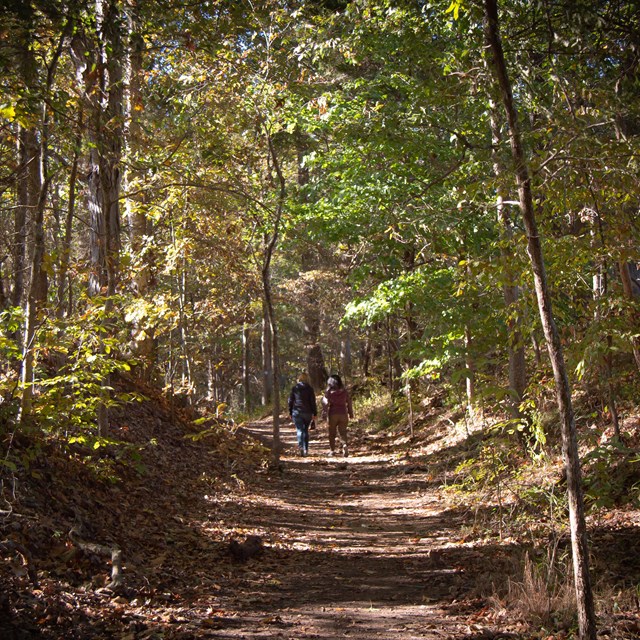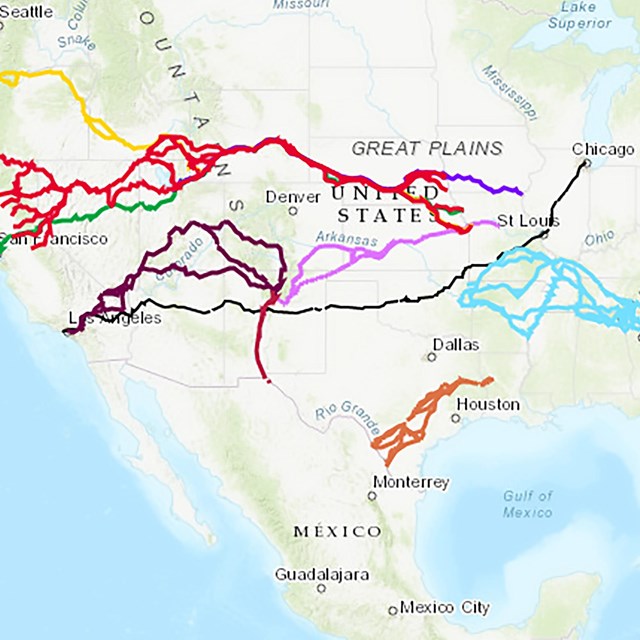Part of a series of articles titled Transportation During the Cherokee Removal 1837 - 1839.
Article
Steamboats: Transportation During the Cherokee Removal 1837 - 1839

Image/Courtesy of Library of Congress
From 1837 to 1839, nine different steamboats were employed to assist in the transportation of Cherokee detachments in reaching Indian Territory. These steamboats included the Knoxville, Newark, Revenue, Smelter, Little Rock, George Guess, Tecumseh, Itasca, and Victoria. Several of these steamboats were also used in the removal of the Muscogee (Creek), Chickasaw, and Seminole.
Steamboats were plying America’s waterways for decades prior to the removal of the Cherokee. American engineer and inventor Robert Fulton is widely credited with developing the first commercially successful steamboat in 1807. The steamboats that traveled along the South’s rivers at the time of the Trail of Tears typically shared a common design: They had a shallow, wooden hull and a wooden paddlewheel driven by steam power. Steamboats with paddlewheels on the side were called sidewheelers, and boats with the paddlewheel located on the rear were called sternwheelers. Sternwheelers could usually operate more efficiently in shallower water, but sidewheelers were easier to maneuver and were faster.
Steamboats were initially fueled by wood and coal, and like all boats, varied in size. The Revenue, for example, was built in Louisville, Kentucky, in 1834 and measured 127 feet from bow to stern and 18 feet, 5.5 inches wide. The Little Rock, built in Cincinnati, Ohio, measured slightly larger at 144 feet long, and 20 feet, 6 inches wide, while the Tecumseh, built in 1835 by James Howard in Jeffersonville, Indiana, measured smaller at 115 feet long and 16 feet wide. Pilot houses, multiple levels of decks, gangplanks, and smokestacks were also common features. Steamboats used in the passenger or tourist trade also had cabins with finely decorated state rooms.

Image/Daily Republican Banner (Nashville)
“Imagine my astonishment, when, in that dark night, my eyes first fell upon the magnificent proportions of the steamer Knoxville, her great tall chimneys[,] her painted white house[-]looking cabin, two or three stories high, her wheel-house or paddle boxes away above her decks, another little house, the pilot house, stuck above all, long ropes running out from bow and stern, with the out end tied to some tree or rock…”
- Description of the Knoxville in 1832 from the recollection of M. J. Parrot on May 16, 1876
Arguably, no other steamboat used in the Cherokee removal was better known for its fine accommodations than the steamboat Smelter. The Smelter was built in 1837 in Cincinnati and was owned and operated by two brothers from Galena, Illinois: Daniel Smith Harris and Robert Scribe Harris. Daniel served as the captain, and Robert served as the engineer. U.S. Army Lt. Edward Deas described this light-draught sidewheeler steamer as a “very good boat, over 150 Tuns Burthen, a fat vessel” and mentioned that it had a cooking stove onboard. The Smelter was renowned for its speed and luxurious accommodations. In an effort to capitalize on the growing tourist trade, the Harris brothers wanted to make sure that their boat offered the best facilities. As a result, it was the first boat on the Upper Mississippi to have private state rooms. The brothers decorated the Smelter with evergreens and, when approaching landings or meeting with other boats, fired a cannon to announce its presence.
“[N]othing of importance occurred until the 22d July when the Steamer Smelter grounded 30 miles below Little Rock, she could proceed no further owing to the low stage of the water…on the 25th July the steamer Tecumse[h] arrived & took the party on board… [We] reached Little Rock, Arkansas, on the 26th July—here I perceived I could proceed no further by water. I immediately made arrangements to procure wagons to proceed by land, with great difficulty I had collected near wagons sufficient but owing to the arrival of the steamer Itaska from Fort Coffee, & a slight rise in the river on the 2d of August the Indians refused to go by land, I had no means to compel them, I was compelled to discharge the wagons & charter the steamer Itaska.”
- Captain Gustavus S. Drane, October 17, 1838
Steamboats fulfilled a number of specific jobs on the waterways. Towboats, for example, moved barges up and down rivers; ferries carried people across waterways; snagboats helped clear the river of large debris; packets carried people, goods, and mail down the rivers; and fuelers resupplied steamboats on the rivers with wood, coal, or oil. Most, if not all, of the steamboats used in the Cherokee removal from 1837–1839 were classified as light-draught packet steamers, specifically designed to maximize the transport of people and goods up and down America’s western and southern rivers.
River travel in the early 19th century was not without danger, and as a result, steamboats did not survive long. In fact, between 1830 and 1839, 272 steamboats were destroyed, each having spent less than three years on the river. After the Cherokee removal, steamboats Newark and Itasca, for example, met an early demise, both hitting snags. The Newark sank within just two minutes in 15 feet of water. Sandbars, storms, fires, and boiler explosions were just some of the other dangers steamboats, their crews, and their passengers faced. On more than one occasion, steamboats carrying detachments of Cherokee along the Trail of Tears ran aground on sandbars. When this occurred, it took a tremendous effort from the crew to move the boat.
“The forenoon was spent in trying to force the S. Boat over the Bar without effect, and the afternoon was consumed in getting her ashore on the north bank of the river. The Party remains encamped on the south bank. The river is rising very little and the weather now looks stormy.”
- Lt. Edward Deas, April 16, 1838
The invention of the steamboat and railroads, along with vast improvements in the construction, design, and maintenance of roads and turnpikes, marked the beginning of a transportation revolution in the United States during the early 1800s. The Cherokee removal occurred as this revolution began to unfold. While the Cherokee utilized these transformative modes of transportation during their forced removal, it is important to remember that the majority traveled by foot on roads over rough terrain.
This publication was made possible by the Cooperative Ecosystem Studies Unit (CESU) Task Agreement P18AC01316 with National Trails– National Park Service and the Center for Historic Preservation at Middle Tennessee State University.
Read the Full Report
Last updated: December 21, 2021


